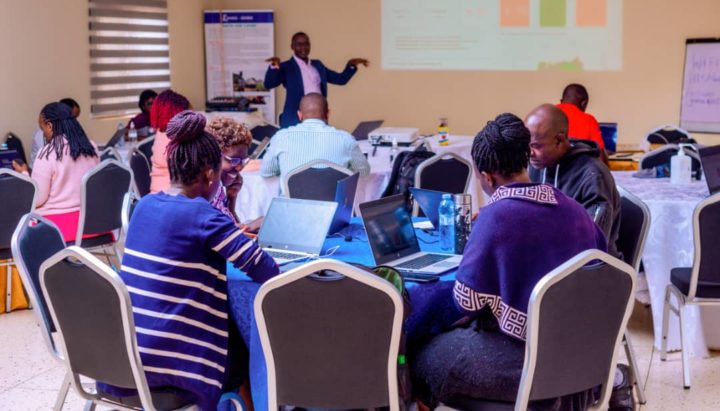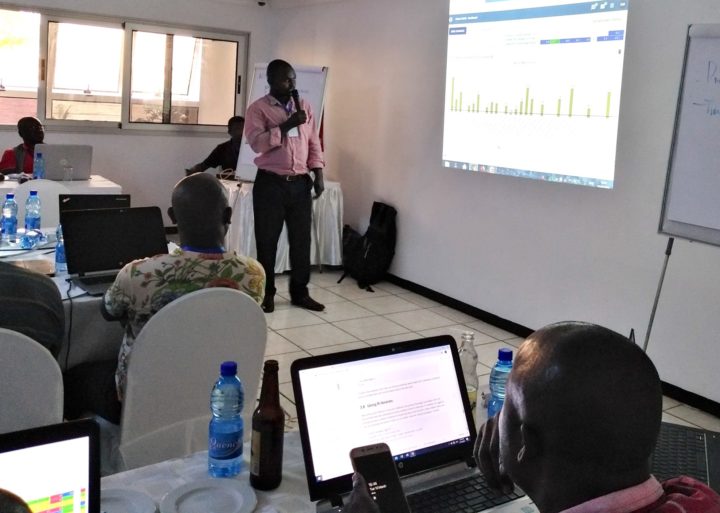DHIS2: The world’s largest HMIS
More than 70 countries use DHIS2 as a national-scale Health Management Information System (HMIS), representing key health data about more than 40% of the world’s population. Learn more about how DHIS2-based HMIS systems support effective planning, management & decision-making in the health sector.
Jump to a section on this page
DHIS2 as an integrated HMIS
A health management information system (HMIS) supports planning, management & decision-making in the health sector. The HMIS typically generates key indicators for routine monitoring of health sector strategies (such as universal coverage of primary care) and health program performance, as well as to inform policy making, quality improvement and resource allocation. Achieving national coverage with a strong HMIS is key to detecting discrepancies in health equity, addressing disparities, and ensuring services reach vulnerable populations, even in low-connectivity and hard-to-reach places.
Routine data such as health service records are the foundation of a strong HMIS, and provide regular, systematic data that empower health managers and policymakers to monitor trends and take timely evidence-informed decisions (WHO). Initially conceived with district health teams in post-apartheid South Africa, DHIS2 is optimized for routine data and responds to data users’ needs at every level of the health system – from frontline health workers to national program staff and policy planners. Our long-standing focus on integrated design principles coupled with robust interoperability features allow DHIS2 to be implemented as part of a national scale information system that emphasizes the sharing, accessibility and reuse of data while reducing duplicative reporting and data silos.
DHIS2 is the most widely used HMIS software in the world, deployed at national scale by more than 70 Ministries of Health, representing key health data about more than 40% of the world’s population. As a WHO Collaborating Centre, HISP supports HMIS strengthening and capacity building in these countries through long-term partnerships between the MoH and the local groups in the HISP network. The DHIS2 digital Health Data Toolkit, developed by HISP in collaboration with WHO, UNICEF, and other partners, promotes the uptake of WHO data standards, improving the analysis and use of routine data in national DHIS2 systems.
On this page, we explore how DHIS2 core software features, implementation tools and training materials help users at all levels of the health system to optimize the use of routine data to improve the management of health services and outcomes.
Where is DHIS2 used as an HMIS?
Collaboration with WHO and global partners
HISP Centre is proud to be a WHO collaborating center for innovation & implementation research for health information systems strengthening. Our partnership helps countries to advance the WHO-recommended strategy for optimizing routine health information systems like DHIS2 to monitor primary health care and service delivery.
The DHIS2 Health Data Toolkit includes WHO-recommended modules for countries to integrate core indicators and recommended dashboard analyses into the HMIS, following HISP principles for integrated information system design. These efforts are coordinated with the Health Data Collaborative, UNICEF and funding partners like Gavi and The Global Fund.
DHIS2 features & tools for optimizing routine health data
DHIS2 software is optimized for key functions of a routine health information system: data collection, compilation, quality assurance, synthesis & analysis, communications and use. When implemented as a central HMIS or data warehouse, DHIS2 can facilitate direct reporting of routine data such as from facilities and districts; or compile data from other existing electronic systems leveraging DHIS2’s robust data exchange and interoperability features. Highly flexible and configurable user roles and access settings allow DHIS2 to function as an integrated system and make data accessible at all levels, while implementing controls for data protection and integrity.
The following DHIS2 software features and implementation tools are freely available to strengthen national HMIS and routine health data systems.
HMIS Software Feature Highlights
- Collect: Streamline reporting & data capture online or offline into a single platform
- Analyze: Build your own indicators, dashboards and data visualizations
- Explore: Maps app with robust GIS capabilities
- Verify: Data quality app, data approvals, data quality metrics and validation rules
- Integrate: Exchange data with other systems like LMIS, labs and CRVS; generate indicators from Trackers & individual level data systems
You can try out some of these features in the interactive tutorial below.
HMIS Implementation Tools & Guidance
WHO metadata for HMIS
Core indicators, data elements and dashboards recommended by WHO health programs for analysis and use of routine health facility data.
Common HMIS metadata library
Reusable DHIS2 reference metadata commonly shared across health programs in an integrated system design.
Data quality toolkit
Assess and improve the quality of routine data at all levels of the health system by implementing the data quality toolkit.
Health facility profile
Self-reporting and triangulation of facility based data about service availability and readiness such as infrastructure, availability of beds, and trained medical staff.
HMIS & logistics
A suite of tools to integrate routine stock data into DHIS2 for triangulation alongside HMIS data and facilitate interoperability with eLMIS.
Maturity profile
Assess the maturity of your country’s HMIS foundations and use results to develop an actionable DHIS2 strengthening plan.
Impact Stories
Read real-world examples of how countries are using DHIS2 as an HMIS for effective management of national health programs.
Learn more about DHIS2 as an HMIS
You can learn more about designing, configuring and implementing DHIS2 as an integrated national-scale system for routine data management through our DHIS2 Academy program. We recommend to check out the following online courses and training material:
- Introduction to DHIS2
- Aggregate data capture & validation fundamentals
- Data quality
- Planning & Budgeting DHIS2 Implementations
DHIS2 design and implementation guidance for HMIS (including 20+ program-specific modules) is available at in the DHIS2 Health Data Toolkit Documentation.
You can also find best practices and lessons learned from countries using DHIS2 as an HMIS around the world on the DHIS2 Community of Practice.
Research articles on DHIS2 as an HMIS
Learn more about DHIS2 as an HMIS through these seelected research publications:
- Comparing strategies to integrate health information systems following a data warehouse approach in four countries (2011)
- WHO digital health packages for disseminating data standards and data use practices (2021)
- Routine use of DHIS2 data: a scoping review (2022)
- Promoting transparency and accountability with district league tables in Sierra Leone and Malawi (2018)


